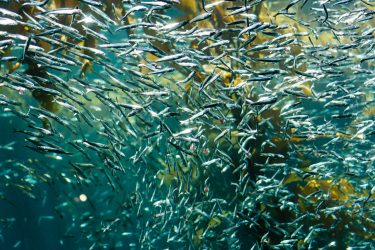
As seafood consumption outpaces the growth of other food sectors and continues to grow worldwide, farmed seafood — also called aquaculture — has increased rapidly to meet consumer demand. That means aquatic farming now puts the most pressure on the smaller forage fish harvested to feed their larger farmed counterparts such as salmon, carp and tilapia.
A new study appearing online June 14 in Nature Sustainability shows that if current aquaculture and agriculture practices remain unchanged into the future, wild forage fish populations likely will be overextended by the year 2050, and possibly sooner — even if all stocks were fished sustainably. But the team, which includes researchers from the University of California, Santa Barbara, and the University of Washington, found that making sensible changes in aquaculture and agriculture production would avoid reaching that threshold.
“Aquaculture has a lot of potential to keep feeding the future planet, but we do probably need to make some changes for sustainability,” said co-author Tim Essington, a UW professor of aquatic and fishery sciences. “We are in a position to start thinking about different scenarios and how we want to invest in technological advances to shape how the aquaculture field is run.”
Read more at UW Today »
